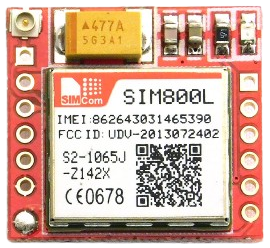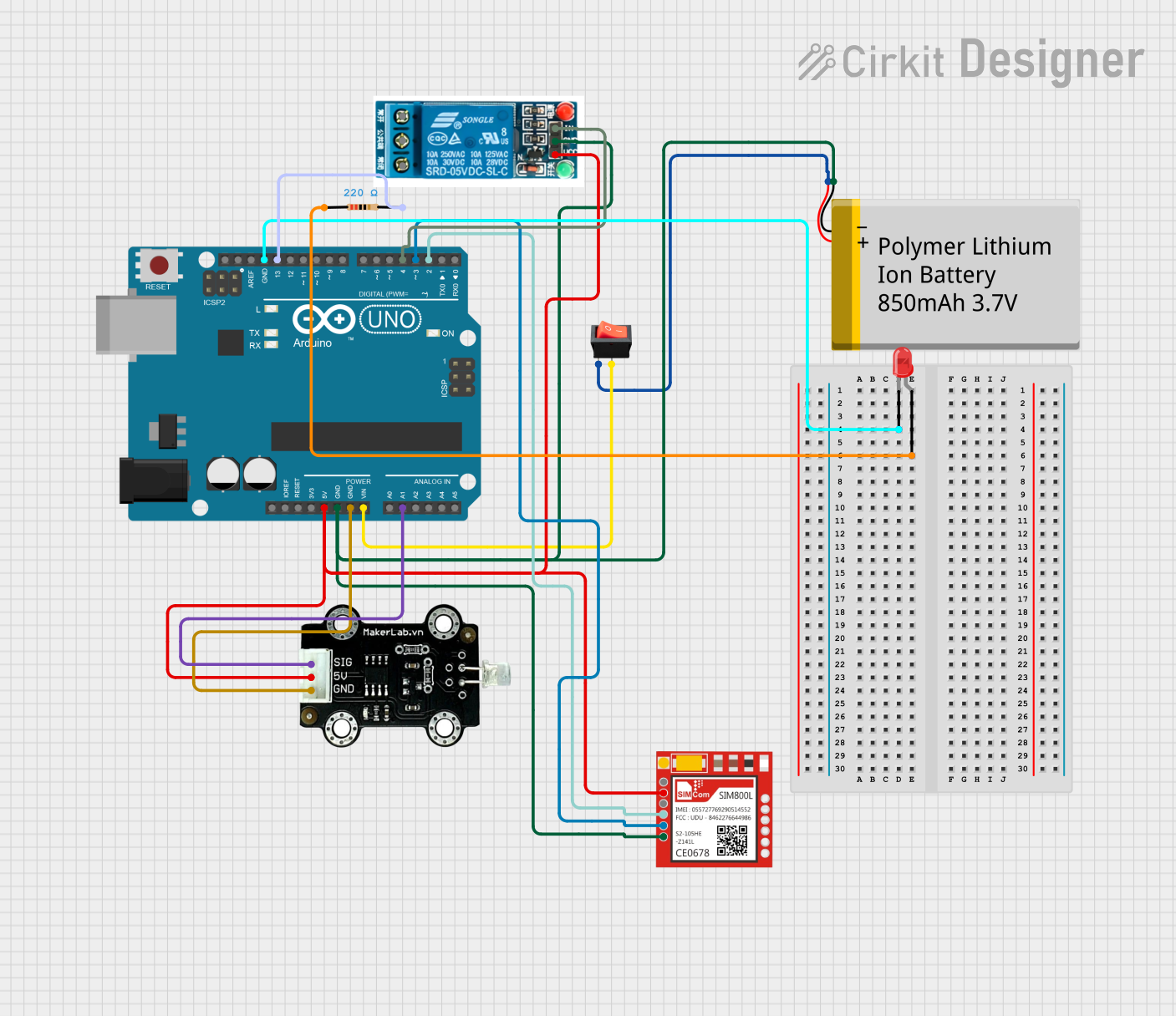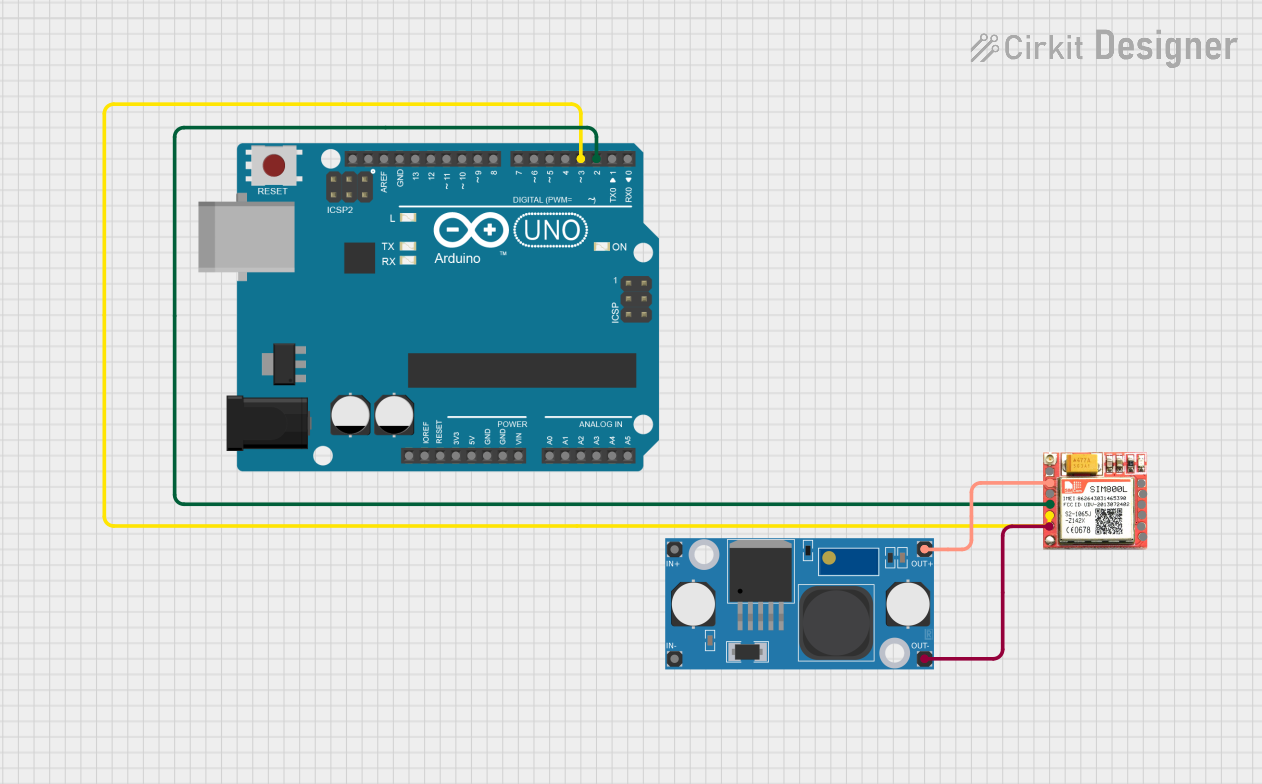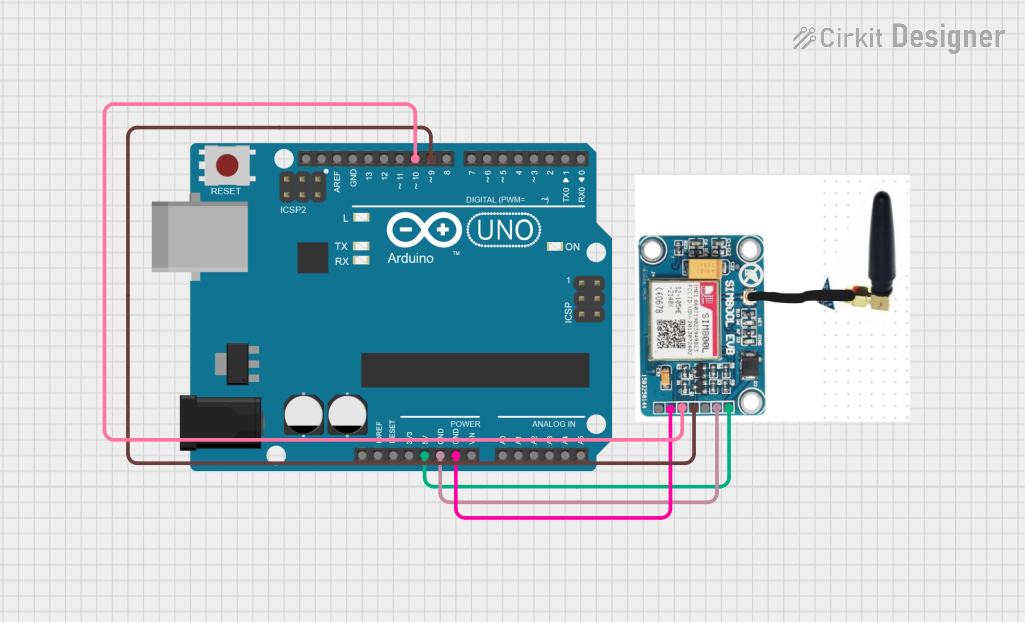
How to Use SIM800L: Examples, Pinouts, and Specs

 Design with SIM800L in Cirkit Designer
Design with SIM800L in Cirkit DesignerIntroduction
The SIM800L is a compact GSM/GPRS module that enables communication over mobile networks. It supports SMS, voice calls, and data transmission, making it an essential component for IoT applications, remote monitoring, and embedded systems requiring wireless connectivity. Its small size and low power consumption make it suitable for portable and battery-powered devices.
Explore Projects Built with SIM800L

 Open Project in Cirkit Designer
Open Project in Cirkit Designer
 Open Project in Cirkit Designer
Open Project in Cirkit Designer
 Open Project in Cirkit Designer
Open Project in Cirkit Designer
 Open Project in Cirkit Designer
Open Project in Cirkit DesignerExplore Projects Built with SIM800L

 Open Project in Cirkit Designer
Open Project in Cirkit Designer
 Open Project in Cirkit Designer
Open Project in Cirkit Designer
 Open Project in Cirkit Designer
Open Project in Cirkit Designer
 Open Project in Cirkit Designer
Open Project in Cirkit DesignerCommon Applications
- Internet of Things (IoT) devices
- Remote monitoring and control systems
- GPS tracking and vehicle telematics
- Home automation
- SMS-based alert systems
- Voice communication in embedded systems
Technical Specifications
The SIM800L module is designed to operate efficiently in a wide range of applications. Below are its key technical details:
Key Technical Details
| Parameter | Value |
|---|---|
| Operating Voltage | 3.4V to 4.4V |
| Recommended Voltage | 4.0V |
| Power Consumption | Idle: ~1mA, Active: ~250mA, Peak: ~2A |
| Frequency Bands | GSM 850/900/1800/1900 MHz |
| Communication Protocols | GSM, GPRS (Class 12) |
| Data Rates | GPRS: Up to 85.6 kbps |
| SIM Card Support | Micro SIM |
| Operating Temperature | -40°C to +85°C |
| Dimensions | 25mm x 23mm x 3mm |
Pin Configuration and Descriptions
The SIM800L module has several pins for power, communication, and control. Below is the pinout and description:
| Pin Name | Pin Number | Description |
|---|---|---|
| VCC | 1 | Power supply input (3.4V to 4.4V) |
| GND | 2 | Ground |
| RXD | 3 | UART Receive (connect to TX of microcontroller) |
| TXD | 4 | UART Transmit (connect to RX of microcontroller) |
| RST | 5 | Reset pin (active low) |
| NET | 6 | Network status LED output |
| SIM_VDD | 7 | SIM card power supply |
| SIM_RST | 8 | SIM card reset |
| SIM_CLK | 9 | SIM card clock |
| SIM_DATA | 10 | SIM card data |
Usage Instructions
How to Use the SIM800L in a Circuit
- Power Supply: Ensure a stable power supply of 4.0V. Use a capacitor (e.g., 1000µF) near the module to handle peak current demands.
- Connections:
- Connect the
VCCpin to a 4.0V power source. - Connect the
GNDpin to the ground of your circuit. - Connect the
RXDpin to the TX pin of your microcontroller (e.g., Arduino). - Connect the
TXDpin to the RX pin of your microcontroller.
- Connect the
- Antenna: Attach an external antenna to the module for better signal reception.
- SIM Card: Insert a micro SIM card into the SIM card slot.
- Reset: Use the
RSTpin to reset the module if needed (active low).
Important Considerations
- Voltage Levels: The SIM800L operates at 3.3V logic levels. Use a voltage divider or level shifter if your microcontroller operates at 5V.
- Power Supply: The module can draw up to 2A during transmission. Ensure your power supply can handle this.
- Antenna Placement: Place the antenna away from other components to avoid interference.
- Network Compatibility: Verify that your SIM card supports 2G networks, as the SIM800L does not support 3G or 4G.
Example: Connecting SIM800L to Arduino UNO
Below is an example of how to send an SMS using the SIM800L module and Arduino UNO:
#include <SoftwareSerial.h>
// Define RX and TX pins for SoftwareSerial
SoftwareSerial SIM800L(10, 11); // RX = Pin 10, TX = Pin 11
void setup() {
Serial.begin(9600); // Initialize Serial Monitor
SIM800L.begin(9600); // Initialize SIM800L module
// Wait for the module to initialize
delay(1000);
Serial.println("Initializing SIM800L...");
// Send AT command to check communication
SIM800L.println("AT");
delay(1000);
if (SIM800L.available()) {
Serial.println("SIM800L is ready!");
} else {
Serial.println("No response from SIM800L.");
}
// Send SMS
sendSMS("+1234567890", "Hello from SIM800L!");
}
void loop() {
// Nothing to do in the loop
}
void sendSMS(String phoneNumber, String message) {
SIM800L.println("AT+CMGF=1"); // Set SMS mode to text
delay(1000);
SIM800L.print("AT+CMGS=\"");
SIM800L.print(phoneNumber); // Set recipient phone number
SIM800L.println("\"");
delay(1000);
SIM800L.print(message); // Write the SMS message
delay(1000);
SIM800L.write(26); // Send Ctrl+Z to send the SMS
delay(5000);
Serial.println("SMS sent!");
}
Notes:
- Replace
+1234567890with the recipient's phone number. - Ensure the Arduino is powered by an external power source to handle the SIM800L's current requirements.
Troubleshooting and FAQs
Common Issues and Solutions
No Response from the Module:
- Ensure the power supply is stable and provides sufficient current (up to 2A).
- Check the connections, especially the RX and TX pins.
- Verify that the SIM card is properly inserted and activated.
Network Registration Fails:
- Check the antenna connection and ensure good signal strength.
- Verify that the SIM card supports 2G networks.
- Use the
AT+CREG?command to check the network registration status.
SMS Not Sending:
- Ensure the SIM card has sufficient balance or SMS credits.
- Verify the recipient's phone number format (e.g., include the country code).
Module Resets Unexpectedly:
- Check the power supply for voltage drops during transmission.
- Add a capacitor (e.g., 1000µF) near the module to stabilize the power.
FAQs
Q: Can the SIM800L work with 5V microcontrollers?
A: Yes, but you need a voltage divider or level shifter for the RX pin to avoid damaging the module.
Q: Does the SIM800L support 3G or 4G networks?
A: No, the SIM800L only supports 2G GSM networks.
Q: How can I check the signal strength?
A: Use the AT+CSQ command. The response will indicate the signal strength in dBm.
Q: Can I use the SIM800L for internet access?
A: Yes, the SIM800L supports GPRS for basic internet access. Use AT commands like AT+SAPBR to configure GPRS.
By following this documentation, you can effectively integrate the SIM800L module into your projects and troubleshoot common issues.